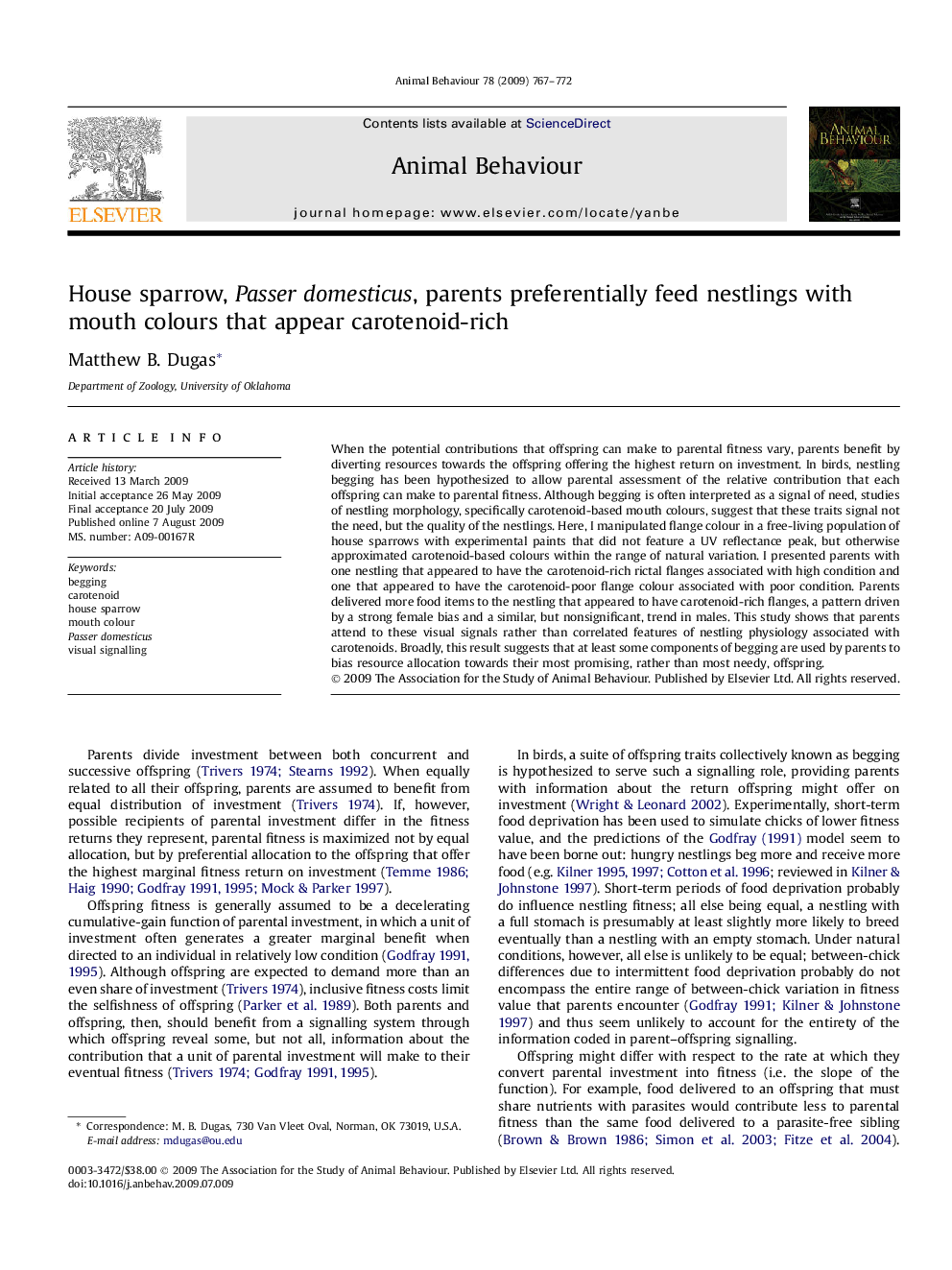| Article ID | Journal | Published Year | Pages | File Type |
|---|---|---|---|---|
| 2417343 | Animal Behaviour | 2009 | 6 Pages |
When the potential contributions that offspring can make to parental fitness vary, parents benefit by diverting resources towards the offspring offering the highest return on investment. In birds, nestling begging has been hypothesized to allow parental assessment of the relative contribution that each offspring can make to parental fitness. Although begging is often interpreted as a signal of need, studies of nestling morphology, specifically carotenoid-based mouth colours, suggest that these traits signal not the need, but the quality of the nestlings. Here, I manipulated flange colour in a free-living population of house sparrows with experimental paints that did not feature a UV reflectance peak, but otherwise approximated carotenoid-based colours within the range of natural variation. I presented parents with one nestling that appeared to have the carotenoid-rich rictal flanges associated with high condition and one that appeared to have the carotenoid-poor flange colour associated with poor condition. Parents delivered more food items to the nestling that appeared to have carotenoid-rich flanges, a pattern driven by a strong female bias and a similar, but nonsignificant, trend in males. This study shows that parents attend to these visual signals rather than correlated features of nestling physiology associated with carotenoids. Broadly, this result suggests that at least some components of begging are used by parents to bias resource allocation towards their most promising, rather than most needy, offspring.
